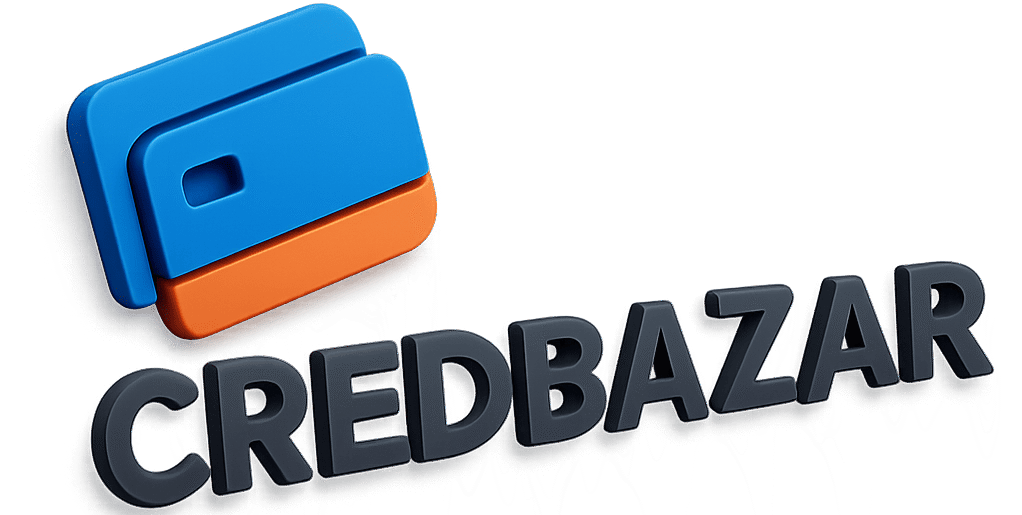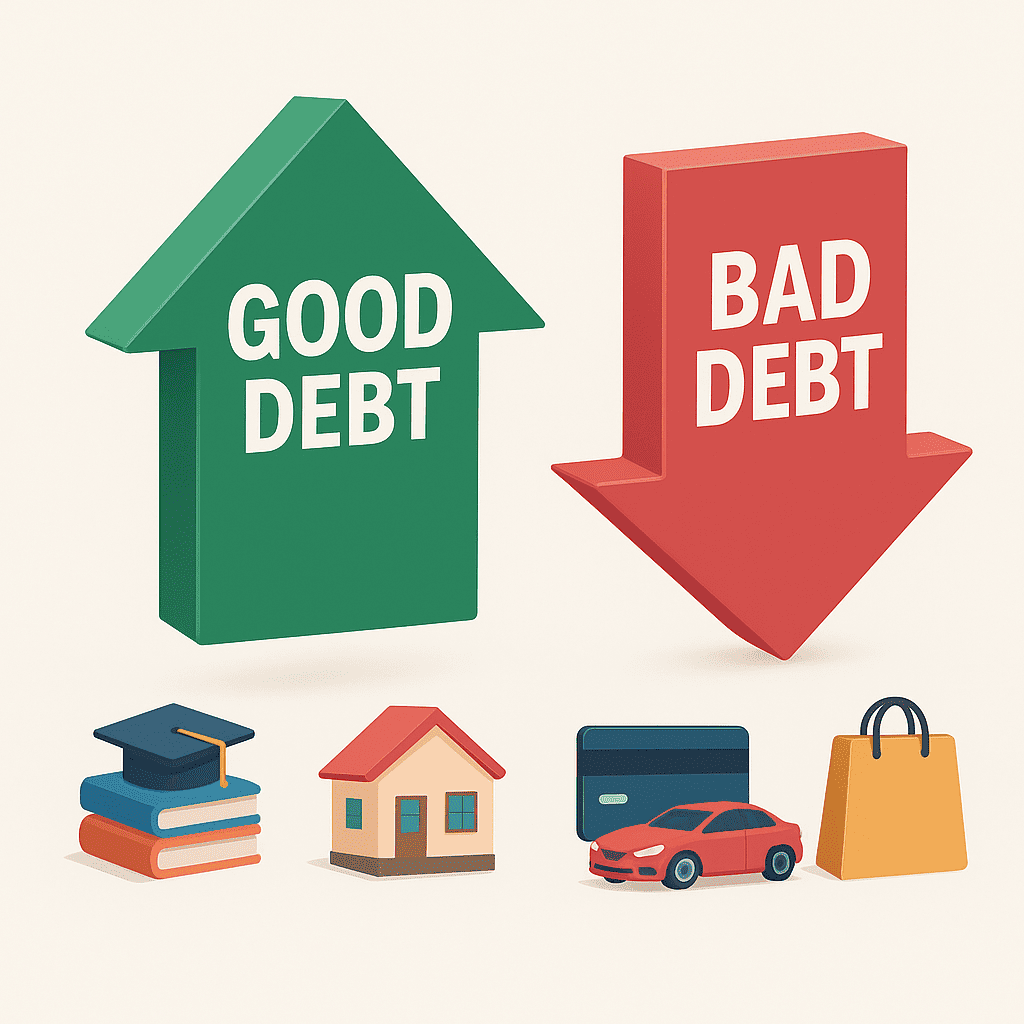When we hear the word “debt”, most of us immediately think of stress, sleepless nights, and financial burdens. But the truth is—not all debt is created equal. Some forms of debt can actually help you build wealth and achieve long-term goals, while others can drain your finances and hold you back.
This is where the concept of good debt vs bad debt comes in.
🔹 What is Good Debt?
Good debt is borrowing money for something that has the potential to increase your net worth, generate income, or add long-term value to your life.
In simple words, good debt is an investment in your future.
✅ Examples of Good Debt:
- Education Loans – Funding higher education can improve your earning potential.
- Home Loan (Mortgage) – Buying a house generally appreciates in value over time.
- Business Loans – Borrowing to start or expand a business can create future income streams.
- Investing in Assets – Taking a loan for an income-generating property or equipment.
👉 Rule of thumb: If the debt helps you build wealth or improve your life in the long run, it’s usually “good.”
📷 Suggested Image: A 3D graphic of a green upward arrow labeled “Good Debt” connected to books (education), a house, and a small business shop.
🔹 What is Bad Debt?
Bad debt is borrowing money to purchase things that lose value quickly or don’t generate any long-term financial return.
It often funds wants rather than needs—and usually comes with high interest rates.
❌ Examples of Bad Debt:
- Credit Card Debt – Using credit cards for luxury items or vacations you can’t afford.
- Payday Loans – Short-term, high-interest loans that trap you in a debt cycle.
- Car Loans (in excess) – Cars depreciate the moment you buy them. A luxury car loan is usually bad debt.
- Impulse Shopping on EMI – Borrowing for gadgets, designer clothes, or entertainment.
👉 Rule of thumb: If the debt drains your finances without future benefit, it’s “bad.”
📷 Suggested Image: A 3D graphic of a red downward arrow labeled “Bad Debt” connected to a credit card, flashy car, and shopping bag.
🔹 Key Differences Between Good Debt and Bad Debt
| Aspect | Good Debt ✅ | Bad Debt ❌ |
|---|---|---|
| Purpose | Builds wealth / future value | Funds consumption / depreciating items |
| Interest Rates | Often lower (education/home loans) | Usually higher (credit cards/payday loans) |
| Impact on Future | Positive (growth & income) | Negative (financial stress & losses) |
| Examples | Education loan, mortgage, business loan | Credit card bills, luxury car loan, shopping EMI |
📷 Suggested Image: A split infographic with one side green (Good Debt) showing growth, and the other side red (Bad Debt) showing financial drain.
🔹 How to Use Debt Wisely
- Borrow with purpose – Always ask: Will this debt make my future better?
- Check affordability – Can you repay it comfortably without hurting daily needs?
- Avoid high-interest loans – Credit cards, payday loans, and unnecessary EMIs are financial traps.
- Focus on ROI (Return on Investment) – Good debt should ideally pay for itself over time.
✅ Final Thoughts
Debt isn’t always a villain—it can be a tool. The secret lies in knowing the difference between good debt and bad debt.
- Use good debt to invest in your education, home, or business.
- Avoid bad debt that funds temporary pleasures but leaves long-lasting burdens.
By being mindful about borrowing, you can let debt work for you, instead of against you.
Hashtags :
#GoodDebt #BadDebt #DebtManagement #PersonalFinance #SmartBorrowing #MoneyTips #FinancialFreedom #DebtFreeJourney


